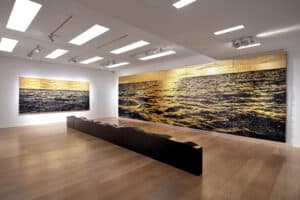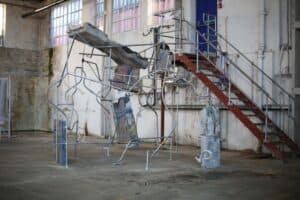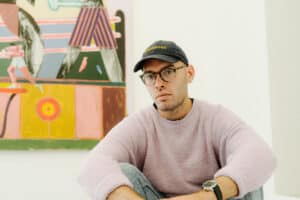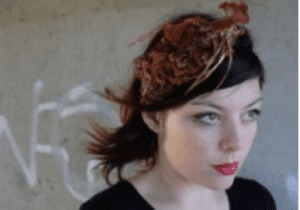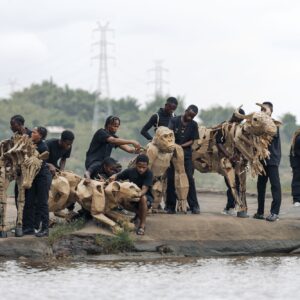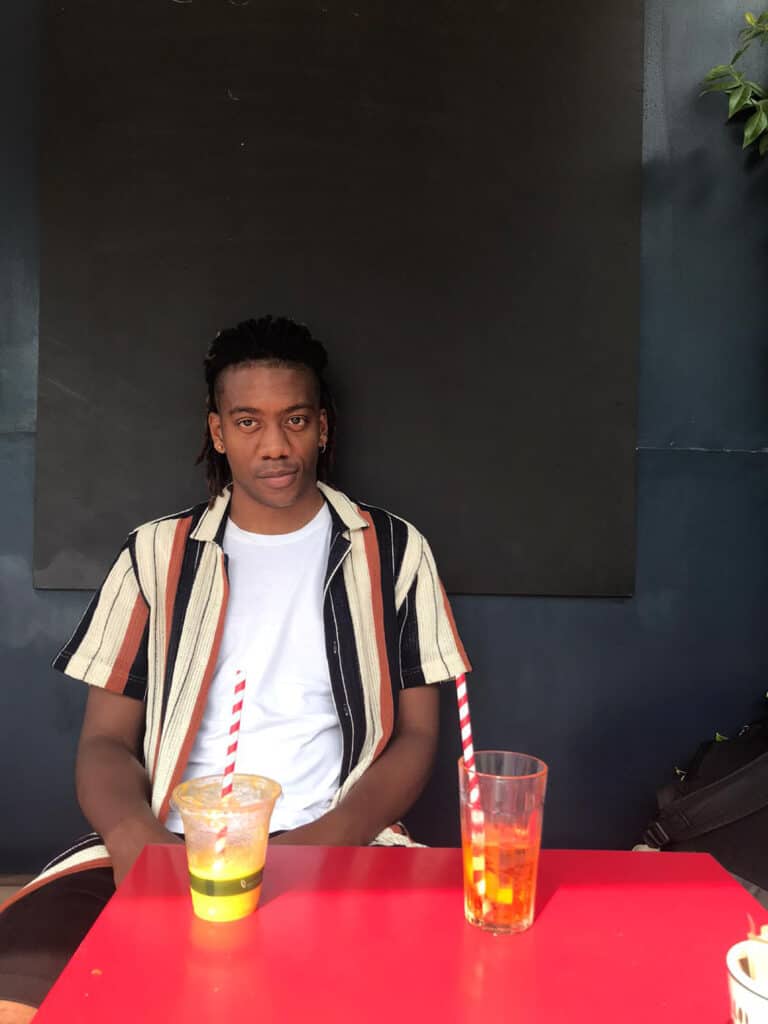
Opening this October in a 67,000 sqft industrial space The Factory Project promises to be one of the highlights of Frieze week. Over the coming weeks, FAD is talking to all ten curatorial teams taking part in the museum scale exhibition. Below we have Jerome
Can you tell us about your curatorial practice?
Jerome: To be honest, I never have thought of myself as a curator. I’m an Artist and I see curation as another skill or lens like painting or drawing, through which I can express my thoughts and desires. Through the lens of curation, I try to view things as a storyteller, in the sense that if the art world is made up of various overlapping narratives my role is to highlight those that resonate with me and add to them, or even in some cases create them. I am less drawn to didactic or seemingly complete exhibitions as my process always starts from the desire to convey a combination of emotions and ideas that intersect and overlap at different points. I apply loose structures and allow the work to build the rest, similar to soft world-building in story structures.
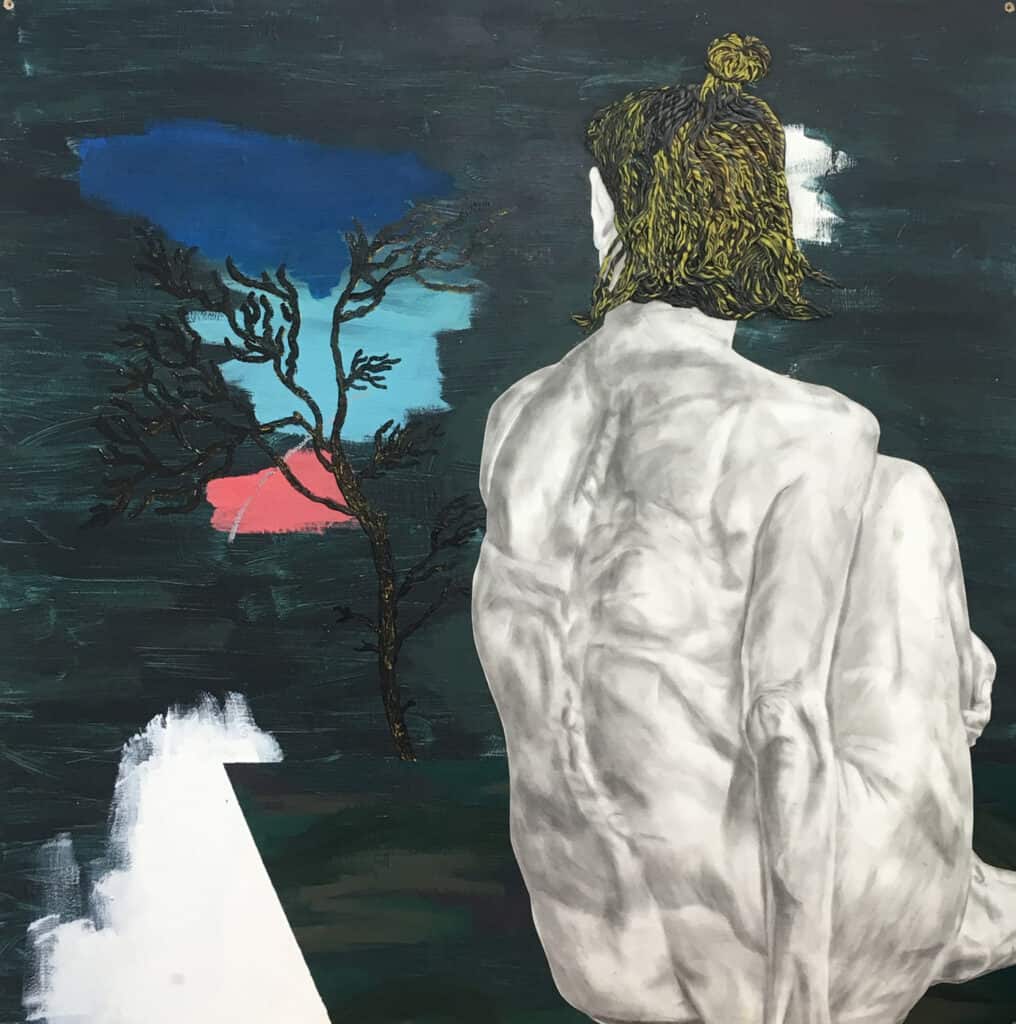
Can you tell us a bit about the exhibition you will be presenting at The Factory Project?
It is called ‘Play and the post-peak’ and will begin to look at intersections of expressions of play and London living.
When Thorp Stavri approached me to do something as part of The Factory Project I used it as an opportunity to begin a conversation around some of the things I have been thinking about. I had recently re-read The Ambiguity of Play by Brian Sutton-Smith and was thinking about how different artist’s works as well as my own, fitted into his seven rhetoric’s of play. Also on my mind were questions around contemporary art spaces in London and how little they showcased anything of the subculture of the mandem that has represented the language of young London for around 20 years and how in comparison it had gained international exposure in different genres like film and music. I found myself drawn more and more to the word peak, its English language meaning, slang meanings and new shared context due to the pandemic.
For me, the exhibition represents a beginning of a conversation of works that feature some or all of the elements I have been thinking about and I am just as excited as anyone else to see the different ways they will speak to each other.
Which artists have you invited to take part in your section of The Factory Project and why have you chosen them?
Exhibiting alongside myself I have asked Josh Woolford, Egle Pilkauskaite, C-DYER, Keith Piper, Otis Blease, Sae Yeoun Hwang, Jannat Hussain, Divya Patel, Nathalie Hollis, Eleni Papazoglou, Janette Parris, Sam Tol, Rosalind Wilson, Olivia Sterling, Debbie Lerner, Bex Massey, Darcey Murphy, Freeyard and Ryan Prince.
All the artists I have asked to exhibit either produce works that I feel fit into two or more of Sutton-Smiths seven rhetoric’s of play; progress, power, identity, frivolity, fate, imaginary and self or they comment on one of the many elements that inform the multifaceted London culture. I won’t talk about all of the artists however two that I would like to mention because of how the works I’ve selected, or their general practice embodies the ideas that have informed my thinking for the exhibition are Debbie Lerner and Sae Yeoun Hwang.
Most of the artists are early-career artists and some are established names, however, Debbie Lerner is the only student I have asked to be in the show. Debbie is going into her second year on the BA Painting course at Camberwell College of Art and has shown a maturity in her practice far beyond what you would expect at this stage of her academic development. After our many conversations around the different theories of play and other elements that inform her practice, I am excited to see how she responds to the space.
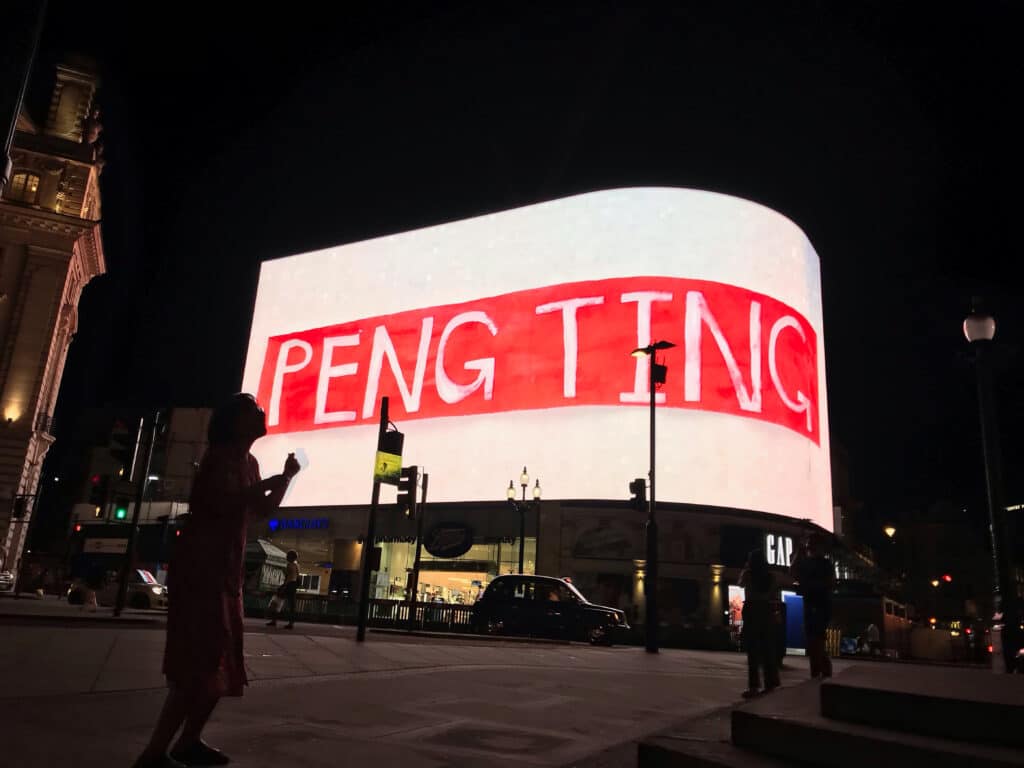
Sae Yeoun Hwang’s works use humour to explore the space between a wide array of cultures she has been exposed to and personal experience. Her work ‘Peng Ting Painting’ was displayed as part of the Circa Art project in Piccadilly Circus and it was honestly one of the most powerful artworks I have ever seen. Some teenagers that happened to be there at the time were completely amazed, and everyone cheered. We will be trying to replicate that in part for the show, ha ha.
How do you feel about the hijack of the word curator by editors, stylists, DJs, z list celebs, a list celebs, tv personalities & influencers?
I don’t really mind it. Perhaps because I don’t particularly identify as one, but even with the word artist, it is so widely used and has become a way of classifying someone that is highly skilled in their field. I think that like with anything people are going to do what they’re going to do, and so the focus should not be about trying to preserve or restrict the use of the word (because that’s also impossible) but rather see it as a challenge to be better. So, when someone outside of the arts experiences a show from a vision from a Curator, they feel the difference.
The Factory Project takes place in a very large IRL exhibition space. How do you envision your exhibition to be presented?
I don’t have a full and complete plan that I’m following. I will work with the works in the space during the install to see how it all wants to be put together. I can say that we are trying to be ambitious and use all parts of the space.
During COVID/ lockdown what have you been reading, watching, listening to?
I was reading a lot around the theories of play, Homo Ludens by Huizinga, Games People Play by Berne Eric, and New Babylon by Constant Nieuwenhuys. Cedric Fauq’s 2016 writing on curating and blackness and a little bit of Homi Bhabha. I’ve come to really value the world of comedy and regularly listen to the Tiger Belly podcast. I also watch Peepshow, US office, random animal videos and One Piece.
Have there been any positives for you from lockdown?
It was an opportunity to be still and reflect. I met some new overseas collectors, and I sold some paintings at vital times when most of my income sources had all but stopped so I really appreciate those that have invested and continue to invest in my art. I worked with Reading Museum and White Chapel Museum and I continued to make work in my room
2022 what do you have plans? & do you feel confident about the future?
I was recently appointed as a Senior Lecturer in Painting and I’m really looking forward to using the knowledge and relationships I’ve acquired so early in my artistic career to help those with less experience flourish. I am super confident about the future and I honestly feel like between now and 2023 something crazy is going to happen.
The Factory Project is one of the largest curated events during London’s Frieze week and will be held at Thameside Industrial Estate, from 9 – 22 October 2021. Free Tickets
The Factory Project is an independent museum-scale exhibition that has been scheduled to take place during London’s Frieze week. It has been initiated to support emerging to mid-career artists and curators and is presented as a multi-disciplinary survey project. This exhibition plays host to 10 UK based independent curators and curatorial platforms; each producing their own exhibitions within the larger factory site and will be showcasing upwards of 80 artists.
The Factory Project takes place at the monumental Thameside Industrial Estate, a 6,284m2 warehouse and yard complex in North Woolwich, Newham – a short walk from London’s City Airport and nestled between the Tate & Lyle’s Sugar Refinery and the Thames Barrier – on Factory Road. It is produced by Thorp Stavri and is supported by Projekt and FAD Magazine.
